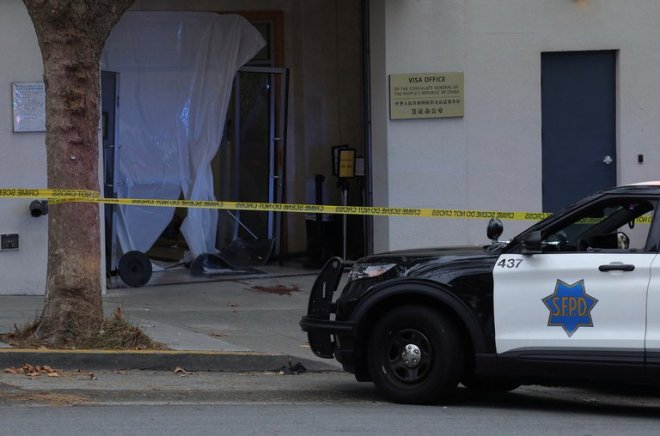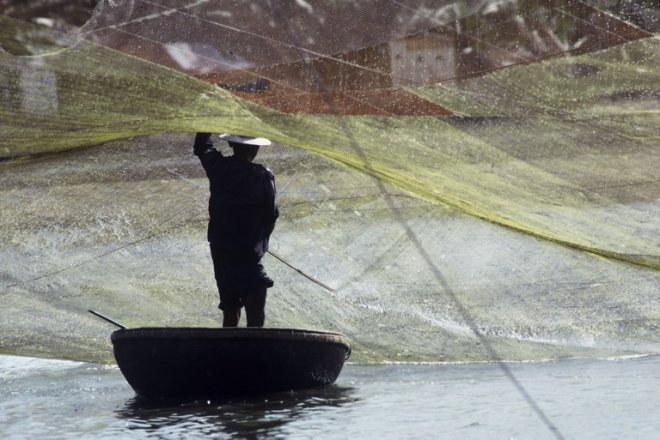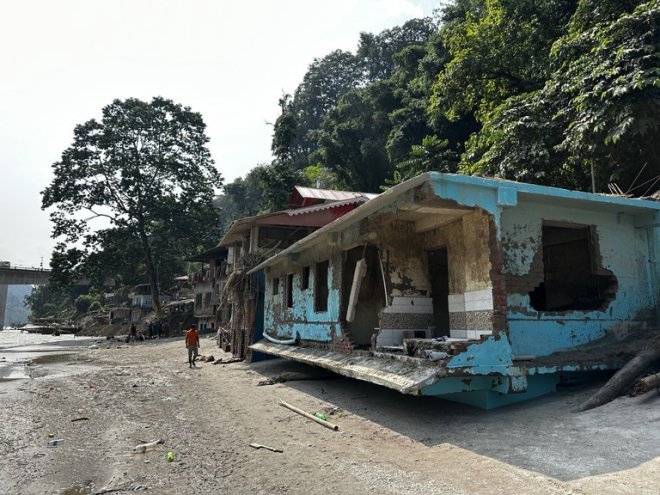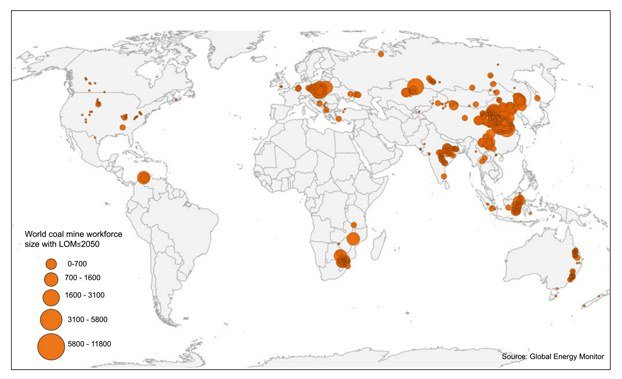After setbacks on the ground, Myanmar junta holds power by ruling the skies
The bombing of a concert in Kachin state last weekend that killed more than 60 people showed the brutal advantage the Myanmar military retains in its struggling campaign for control of the country: its air power.Junta forces have faced a number of setbacks since ousting the democratically elected government in a coup 20 months ago. Between 12,000 and 15,000 of its soldiers may have been killed, according to a Stimson Center report. Thousands of troops are believed to have defected. The country’s economy is in shambles, pushing poverty rates to a 10-year high.
But the military’s superior arsenal, which includes heavy artillery in addition to its jets and attack helicopters, has made up for missteps on the ground and make it tough for rebel forces, including People’s Defense Force militias aligned with the shadow National Unity Government and anti-junta ethnic armies, to mount significant offensives of their own.
“The junta is reliant on its airpower and its artillery to offset the limitations of its infantry forces, and it relies on bombardments and airstrikes to drive the PDFs and the EAO forces away from its main bases and cities,” says Lucas Myers, who has written about the conflict as program coordinator for the Wilson Center’s Asia Program in Washington.
Rebel forces are “struggling to be able to take ground when faced with artillery and airpower,” he added. “That"s their main limitation on the battlefield.”
Kachin strike
The Oct. 23 strike in Kachin state in Myanmar’s far north killed at least 66 attendees of the concert to celebrate the anniversary of the Kachin Independence Organization, according to a KIO statement. The group is the political wing of one of Myanmar’s most powerful ethnic insurgencies, which has been fighting for greater autonomy for the region for decades.
Most of the dead were KIO officers, but 17 civilians were also killed, according to the group, which said the death toll could rise. At least 61 people were initially wounded in the attack, which the State Administration Council (SAC), as the junta calls itself, said came in retaliation for Kachin fighters and PDF militias attacking military forces in the area. A few of the wounded later died as residents said roadblocks set up by military forces hampered aid efforts.
Analysts said the strike is part of the military’s ruthless counterinsurgency strategy, which has seen it target civilian supporters of anti-junta forces through a scorched earth campaign. More than 36,000 homes have been burned down, at least 1 million people have been displaced, and more than 2,000 civilians killed.
But airstrikes like the one in Kachin haven’t overpowered the junta’s many enemies, and in some cases seem to have spurred on resistance, leaving an uncertain balance of power between an expanding, though fractionalized, opposition and a more heavily armed military.
Myanmar’s air arsenal
Myanmar’s air force has more than 100 combat-capable aircraft and is looking to acquire more, according to Akhil Kadidal, an analyst at Janes, a defense intelligence firm based in the United Kingdom.
Its fleet includes Mi-35 gunships, attack helicopters built by Russia that can ferry troops in and out of combat, and small jets like Russian Yak-130s and Chinese-made K-8s and Nanchang A-5Cs. The strike in Kachin state reportedly was carried out by Yak-130s, which are typically used as training aircraft. About 70% of its air arsenal are planes, according to Kadidal.
Myanmar received two, more capable Sukhoi SU-30SM fighters from Russia earlier this year, with another four still to be delivered. The junta reported that the leader of the SAC, Senior Gen. Min Aung Hlaing, visited the Irkustsk Aviation plant in Russia last month, itself an indication of the value the junta places in its air power.
In Myanmar’s past conflicts, the military has hedged its use of air power against rebel groups, which have historically been arrayed in border regions, Kadidal said. Bombardments risk sparking a mass exodus into neighboring countries – Thailand, China, Bangladesh and India -- or striking civilians in those countries.
 A Myanmar Air Force Mi-35 attack helicopter launches a salvo of rockets during the "Sin Phyu Shin" joint military exercises near Pathein city in the Irrawaddy delta region, Feb. 2, 2018. Credit: AFP
A Myanmar Air Force Mi-35 attack helicopter launches a salvo of rockets during the "Sin Phyu Shin" joint military exercises near Pathein city in the Irrawaddy delta region, Feb. 2, 2018. Credit: AFPPressure from all sides
But the SAC now relies on its air power as it fights on several fronts at once. It has battled Rakhine, Chin, Kachin, Shan, Karenni and Karen ethnic forces and dozens of pro-democracy militias recruited from Myanmar’s ethnic Burman majority. Previously safe supply routes in the country’s interior are now routinely attacked.
Airpower allows the regime to exert its offensive power over long distances, Kadidal said. Military pilots flew 13 air combat operations in October, Kadidal said.
“The result has been the aerial bombardment of locations not under the control of the regime"s ground forces,” he said.
Zachary Abuza, a U.S. National War College professor who specializes in Southeast Asian politics and security issues, said during an online presentation on Myanmar presented by the Stimson Center think tank, that National Unity Government and affiliated ethnic groups control about 50% of the country.
The SAC’s main air advantage comes from its attack helicopters, which can fire its weapons at close range and transport troops in and out of fights, Abuza said.
While the Oct. 23 attack in Kachin state is thought to have resulted in the single-most casualties from an air attack since the coup, helicopters have been the source of numerous atrocities in the conflict.
Attack helicopters were part of a Sept. 16 strike on a village school in Sagaing that killed at least seven students between 7 and 16 years of age. “Two helicopters hovered above and attacked us from both sides. For an hour, there was nothing we could do,” one parent who witnessed the attack told RFA Burmese, speaking on condition of anonymity for safety reasons.
A January attack in Gahe village in Sagaing"s Indaw township killed 5, including four siblings, the youngest of whom was 5 years old, RFA Burmese reported.
The following month a helicopter fired on a graduation ceremony for PDF recruits in Myinmu township’s Pa Dat Taing village. Terrified residents who scattered during the strike discovered 11 charred bodies upon their return.
Calls for help
In February, a report from the U.N. special rapporteur on Myanmar accused the military of “bombing villages indiscriminately” and called for an arms embargo against the regime. It noted the delivery of Russian-made unmanned aerial vehicles and Chinese-made K-8 attack aircraft and transport planes that were delivered to the junta after the coup. According to the U.N., more than 40 member states, mostly Western nations, currently have arms embargoes against Myanmar.
The SAC’s air advantage has also led to calls for international assistance, through surface-to-air missiles -- known as “manpads,” for man-portable, air defense systems -- and a no-fly zone akin to NATO operations in the Balkans in the early 1990s.
But analysts say there is little appetite for either denying Myanmar’s military access to the air or arming rebels on the ground. A no-fly zone would require support from regional countries, all of which have hedged their bets in the conflict.
Myers of the Wilson Center said that China, which has been a junta ally, would likely object to any arming of rebel forces by Western countries.
That leaves attacking air forces when they are stationary.
“The best way for an insurgent group to take out air assets is on the ground,” Abuza said at a Stimson Center event.
The NUG has been “doxing” military pilots -- publishing their addresses – as part of an assassination campaign. Abuza said the house of a pilot was recently bombed. Rebel forces also need to attack junta supply routes, he said. The jet fuel the aircraft needs is transported over land on trucks, not via pipelines.
A diminished capability?
The strength of Myanmar’s air force may also diminish on its own, Abuza told RFA in a separate interview. Russia’s ability to provide spare parts for its helicopters, which break down frequently, are likely to be hard to come by, given the sanctions against it and its own equipment needs for the campaign in Ukraine.
Kadidal at Janes said the Myanmar military is “likely” to have acquired Kamov Ka-29 Helix utility-attack helicopters. The junta hasn’t officially announced a purchase, but a Ka-29 was photographed on Oct. 19 participating in combat operations in the Yinmarbin township in the Sagaing, he said.
Despite being outgunned, rebel groups remain optimistic about their chances, in part because they’ve noticed signs the SAC’s advantage in weapons may be dissipating, according to Michael Martin, an expert on Myanmar who for many years reported on the country for the Congressional Research Service in Washington. He met opposition fighters from several combatant groups on a trip this month to India and Thailand.
Soldiers from the Karen National Liberation Army in eastern Myanmar, the nation’s longest-running insurgency, are increasingly finding 500-pound bombs that haven’t exploded on impact.
“They’re duds,” said Martin, who is now an adjunct fellow at the Center for Strategic and International Studies think tank in Washington. “And when examined, they find that they are using a cheaper and less effective fuse.”
Other fighters told him junta jets sometimes just fly overhead without dropping any munitions, which they take as a possible sign of supply issues, he said.
Even so, he said, they hope for better tools to strike back at the military’s air advantage.
“Each group fighting in each theater certainly would like to have better equipment, better weaponry -- and particularly if they could deal with the aircraft that the SAC is sending out, they think victory is feasible in a not-too-distant future.”
[圖擷取自網路,如有疑問請私訊]
|
本篇 |
不想錯過? 請追蹤FB專頁! |
| 喜歡這篇嗎?快分享吧! |
相關文章
AsianNewsCast




















